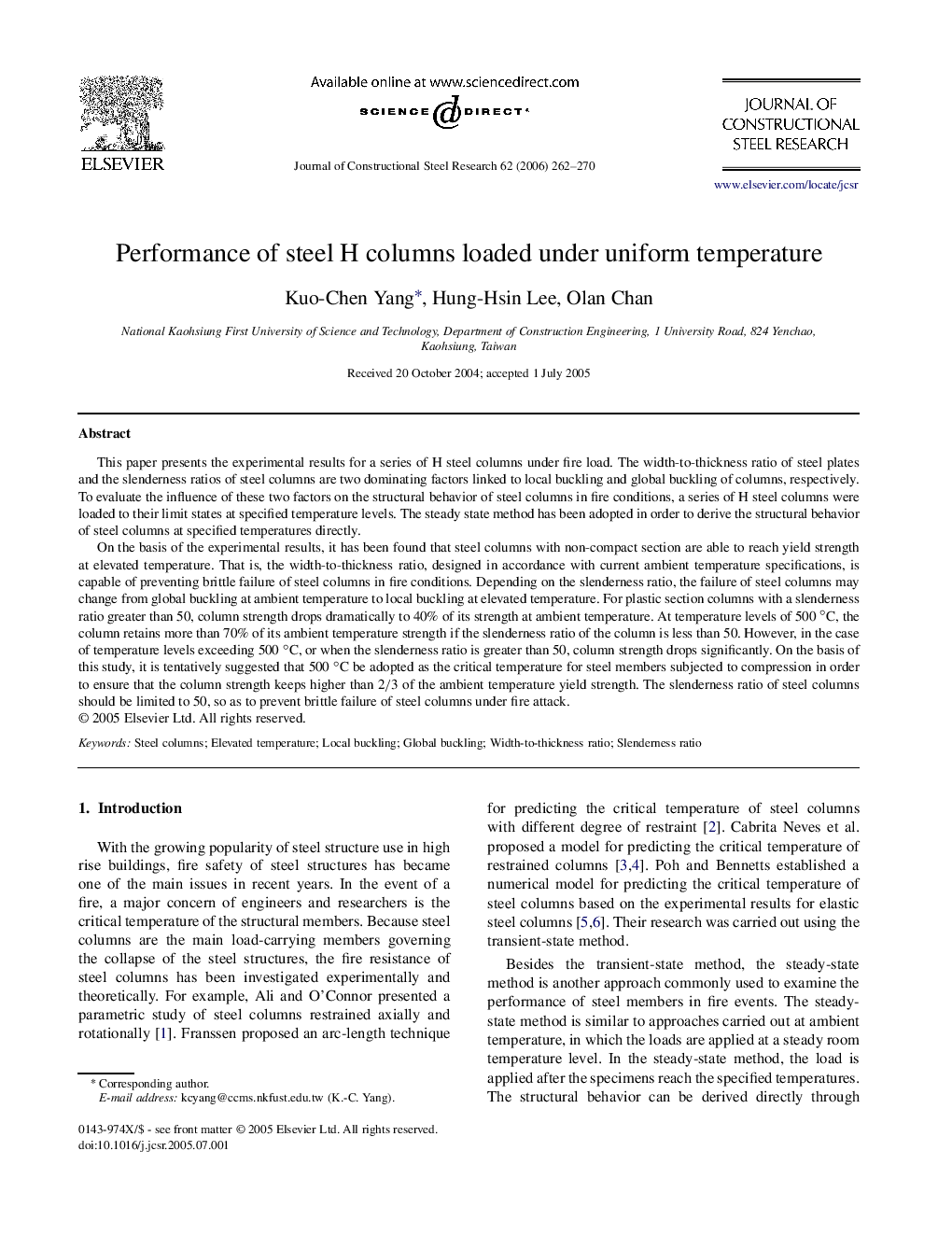| Article ID | Journal | Published Year | Pages | File Type |
|---|---|---|---|---|
| 286349 | Journal of Constructional Steel Research | 2006 | 9 Pages |
This paper presents the experimental results for a series of H steel columns under fire load. The width-to-thickness ratio of steel plates and the slenderness ratios of steel columns are two dominating factors linked to local buckling and global buckling of columns, respectively. To evaluate the influence of these two factors on the structural behavior of steel columns in fire conditions, a series of H steel columns were loaded to their limit states at specified temperature levels. The steady state method has been adopted in order to derive the structural behavior of steel columns at specified temperatures directly.On the basis of the experimental results, it has been found that steel columns with non-compact section are able to reach yield strength at elevated temperature. That is, the width-to-thickness ratio, designed in accordance with current ambient temperature specifications, is capable of preventing brittle failure of steel columns in fire conditions. Depending on the slenderness ratio, the failure of steel columns may change from global buckling at ambient temperature to local buckling at elevated temperature. For plastic section columns with a slenderness ratio greater than 50, column strength drops dramatically to 40% of its strength at ambient temperature. At temperature levels of 500 ∘C, the column retains more than 70% of its ambient temperature strength if the slenderness ratio of the column is less than 50. However, in the case of temperature levels exceeding 500 ∘C, or when the slenderness ratio is greater than 50, column strength drops significantly. On the basis of this study, it is tentatively suggested that 500 ∘C be adopted as the critical temperature for steel members subjected to compression in order to ensure that the column strength keeps higher than 2/3 of the ambient temperature yield strength. The slenderness ratio of steel columns should be limited to 50, so as to prevent brittle failure of steel columns under fire attack.
